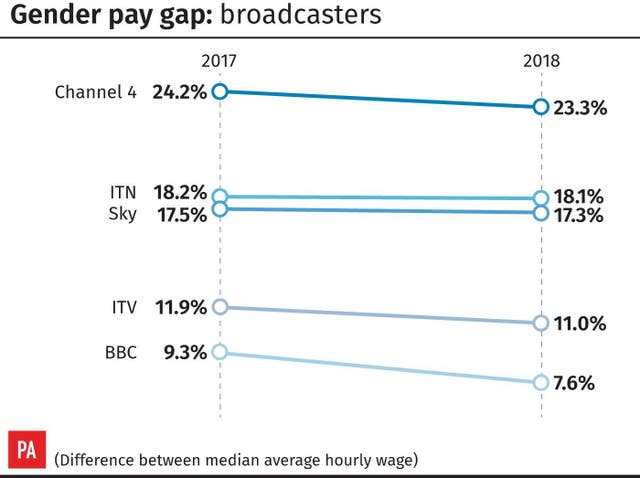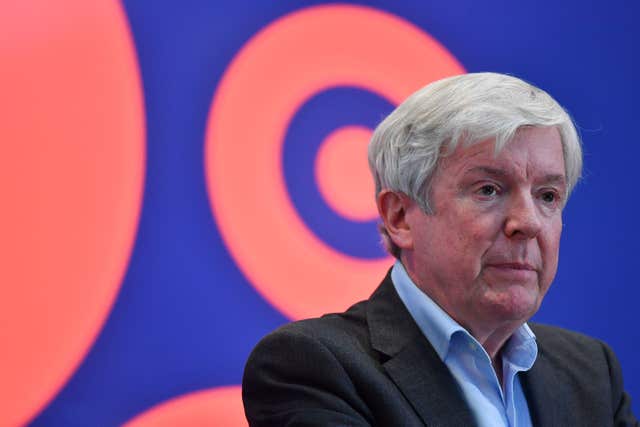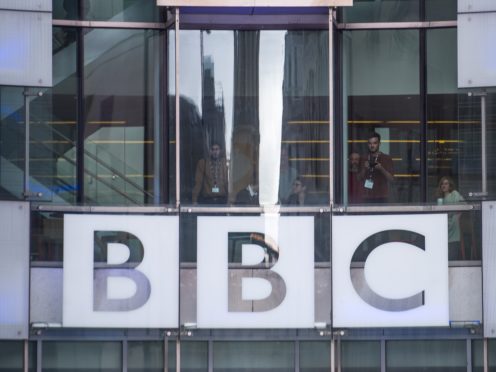The BBC has the smallest gender pay gap among the UK’s main broadcasters, figures show.
The corporation has also closed its gap by more percentage points than any of its rivals.
The median hourly pay for women at the BBC in 2018 was 7.6% lower than men’s – down from 9.3% in 2017.

The gap is lower than that reported by fellow broadcasters ITV, Sky, ITN and Channel 4.
It is also below the figure for Channel 5 – the only one of the UK’s main broadcasters to report a year-on-year increase.
The gender pay gap is the difference between the average hourly wage of men and women working in the organisation.
It is not the same as equal pay, where companies are required by law to pay men and women doing the same job the same salary.
BBC director-general Tony Hall has set a target to close the corporation’s pay gap by the end of 2020.

Lord Hall described the target as “a really tough challenge”, but said it was “the right response to an issue which has gone on for too long”.
Channel 4 reported the largest gap of the UK’s main broadcasters. In 2018 women’s hourly pay was 23.3% lower than men’s, down slightly from 24.2% the previous year.
Chief executive Alex Mahon admitted there is “much to do in order to bring our gender pay gap to an acceptable level”.
She has set a target for a 50:50 gender balance in C4’s top 100 earners by 2023.
“This is where we believe we can make the most impact and I am pleased that the number of women in our top 100 earners has already increased to 41 in 2018, up from 34 in 2017,” she said.
The broadcaster said it was “pleased” that its gap had reduced, adding: “Our gender pay gap exists because of the make-up of our workforce, with more men than women working in the most senior or highly paid roles at ITV, and more women than men in lower paying roles.”
At ITV, the gap has fallen slightly from 11.9% to 11%.
In contrast, Channel 5 reported an increase in the size of its gender pay gap, from 2.1% in 2017 to 12.7% in 2018.
Viacom, which owns Channel 5, said: “We are disappointed that our gender pay gap increased in the latest tax year, rather than narrowing as we had intended; if anything, the results have sharpened Viacom’s resolve to achieve gender pay parity across our UK workforce.”
ITN and Sky reported pay gaps that were barely changed.
Women’s median hourly pay at ITN in 2018 was 18.1% below men’s, compared with 18.2% in 2017.
ITN said it was committed to halve the gender pay gap and see women occupy half of the 20 highest earning roles by 2022, with a third in position by 2020.
Chief executive John Hardie said: “When we published our initial gender pay gap report we set ourselves tough targets to tackle an issue that is reflected across all industry and society. We have already made good progress, but this is just the start of a journey to which ITN is fully committed.”
Sky reported a gap of 17.3% for 2018, down from 17.5%.
Sky Television said: “Like many big organisations we have more men than women in senior, digital and technology roles and this is what is driving our gap. It’s by achieving gender parity in these areas that we’ll close our gender pay gap.”
All companies and public bodies with 250 employees or more are required to publish their median and mean gender pay gap figures.
The deadline for public sector employers is March 30, while for private and voluntary sector employers the deadline is April 4.
According to the Office for National Statistics, the median pay gap among all UK employees in 2018 was 17.9%.
